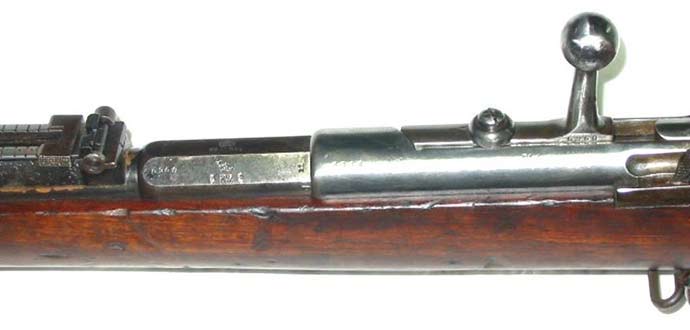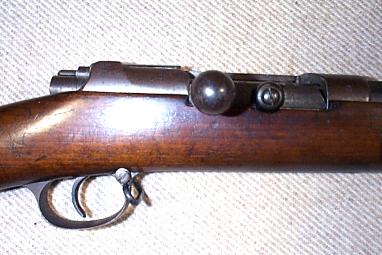Model 1871 and derivatives
Model 1871 Rifle
The Mauser Model 1871 was Mauser's first rifle. The new Mauser Model 1871 rifle was adopted by the German Empire (with the exception of the Kingdom of Bavaria) as the Gewehr 71, or Infanterie-Gewehr 71 (I.G.Mod.71 was printed on the rifles themselves). Production started at the Oberndorf factory for the infantry version firing a black powder 11 x 60 mm round from a long 850 mm barrel, and shorter versions were introduced with the 700 mm barreled jaeger and 500 mm cavalry carbine. It was adopted by the German Empire but not Bavaria.
A number of slightly modified versions were widely sold to other countries, with rounds that would today be considered very large, typically 9.5 to 11.5 mm in caliber. Serbia designed an improved version of the Model 71 in 10.15 mm caliber, produced in Germany, called the Mauser-Milovanovic M1878/80. In 1884 an 8-shot tubular magazine was added by Mauser, who offered the Model 71/84. The Turkish Model 1887 rifle was the first of a series of rifles produced for the Turkish Army by Mauser. Its design echoed that of the German Gewehr 71/84 service rifle, being a bolt-action weapon with a tubular magazine beneath the barrel.
Model 1871 Cavalry Carbine

Model 1871/84

GENERALLY: The I.G.Mod.71/84, Germany's first infantry repeating rifle, is a further evolution of Paul Mauser's first successful military rifle, the I.G.Mod.71. German Mauser. Taking advantage of critical lessons learned from the Turks at the battles of Plevna in 1877, (where the Turks, armed in important part with M1866 Winchester repeating rifles soundly defeated the numerically superior Russians armed with Krnka and Berdan II single shot rifles) the I.G.Mod.71/84 is an I.G.Mod.71 with a tubular magazine (itself a derivation of the Winchester system), a Mauser designed lifting mechanism similar to the Kropatchek design and improved rear sight. To more fully understand the development of this rifle please review the notes at: I.G.Mod.71. German Mauser.

The most significant improvement being the addition of an 8 round tubular magazine in the forestock loaded singly from the top with the bolt open. Succeeding rounds are carried to the chamber by an elevator which pivots at the back, similarly to the Kropatcheks but quite unlike the Swiss Vetterli repeater. There is a magazine cut-off lever on the left side so that the rifle may be used in single shot mode. The I.G.Mod.71/84 retained the I.G.Mod.71 bolt guide rib as its sole locking lug and the bolt washer which was unscrewed to remove and disassemble the segmented bolt. A pin through the washer bolt to keep it from being removed was an improvement as was the addition of an ejector, which the I.G.Mod.71 had lacked.

The rifles are finished with blued barrel, receiver and bolt in the white, with a support pieces being fire blued. I.G. in Gothic style. Like the I.G.Mod.71, the Prussian state where the rifles were in service is indicted by the crowned monarch’s cypher (F.W..L, W & F.A. Fredrick Albert, King of Saxony) stamped into the knoxform. Also like the I.G.Mod.71, the caliber is noted on the octagonal barrel breach (10.95-11.05*).
The I.G.Mod.71/84 represents what may be the height of smalls arms manufacturing refinement, the workmanship being since unsurpassed. As many as one million may have been manufactured.
Although the I.G.Mod.71/84 never saw front line military service, many saw service with German reserve and behind the lines units through WW1. Large numbers were sold as surplus in the US and Canada and ammunition for them was made commercially into the mid-twentieth century.








